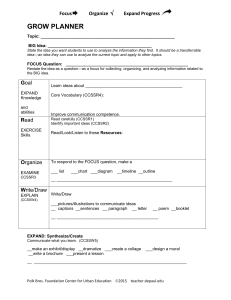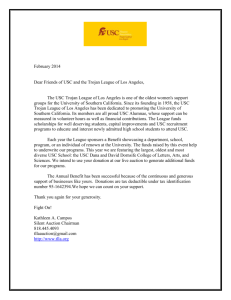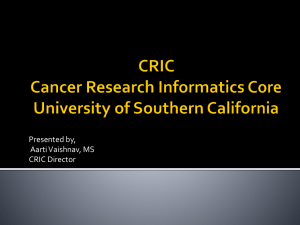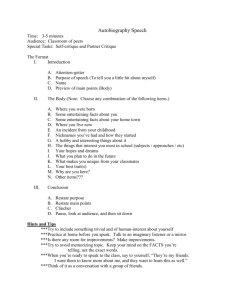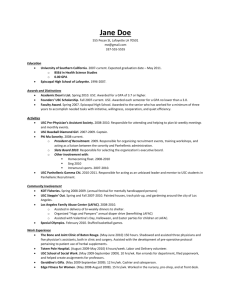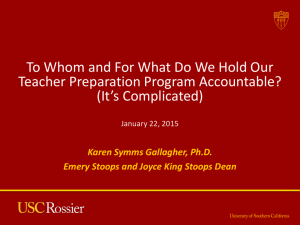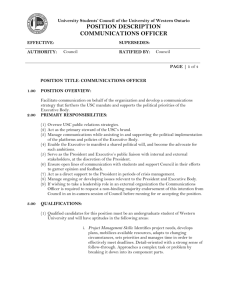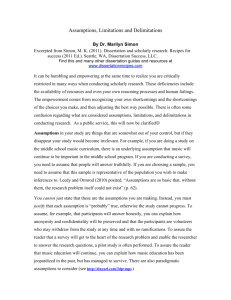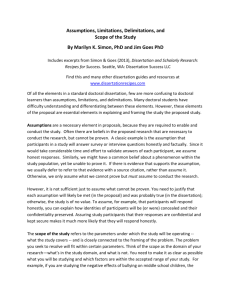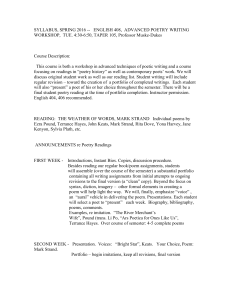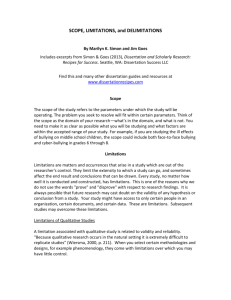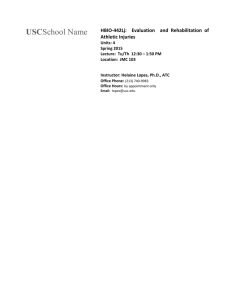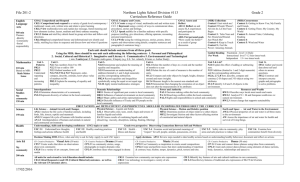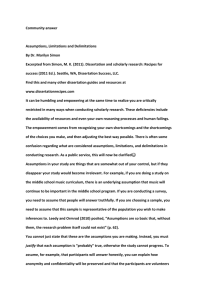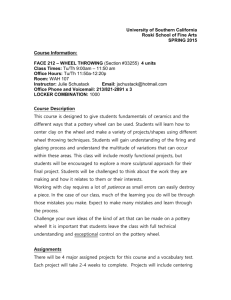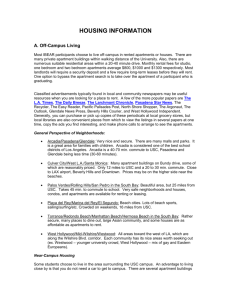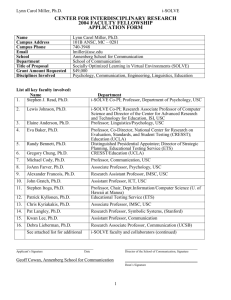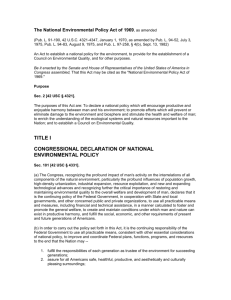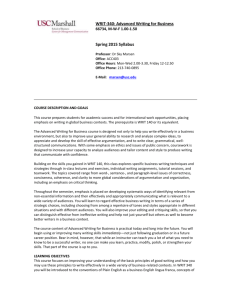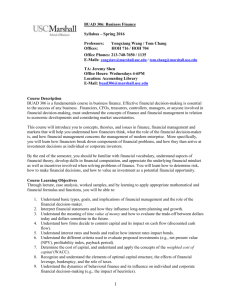Structure of a Dissertation based on APA guidelines
advertisement
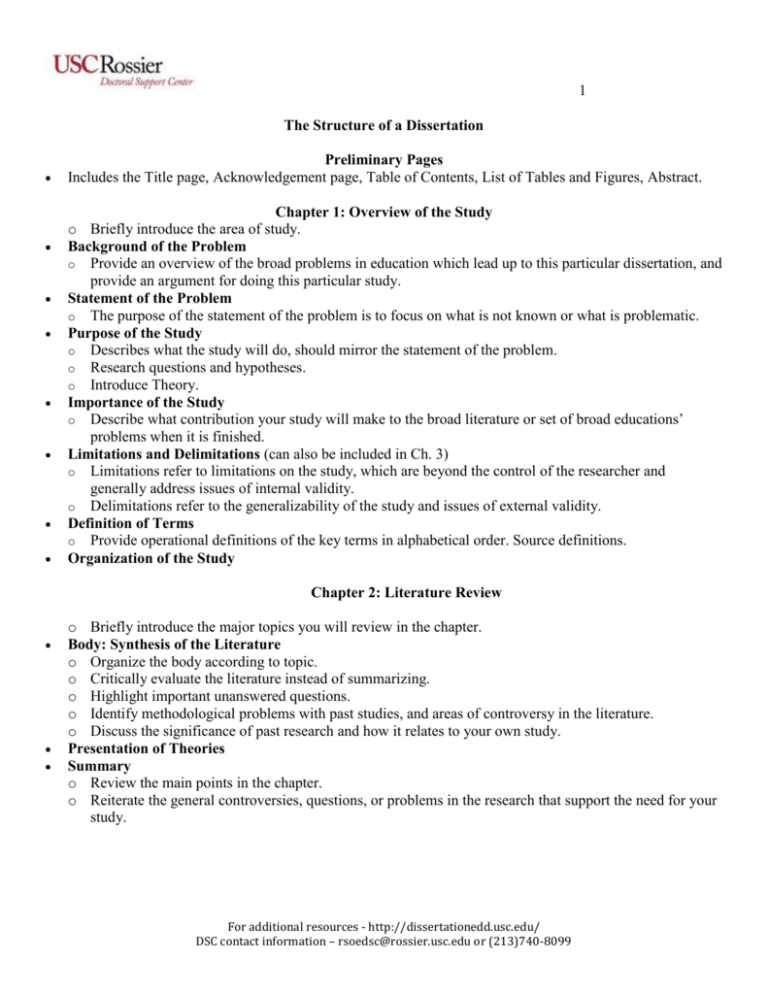
1 The Structure of a Dissertation Preliminary Pages Includes the Title page, Acknowledgement page, Table of Contents, List of Tables and Figures, Abstract. Chapter 1: Overview of the Study o Briefly introduce the area of study. Background of the Problem o Provide an overview of the broad problems in education which lead up to this particular dissertation, and provide an argument for doing this particular study. Statement of the Problem o The purpose of the statement of the problem is to focus on what is not known or what is problematic. Purpose of the Study o Describes what the study will do, should mirror the statement of the problem. o Research questions and hypotheses. o Introduce Theory. Importance of the Study o Describe what contribution your study will make to the broad literature or set of broad educations’ problems when it is finished. Limitations and Delimitations (can also be included in Ch. 3) o Limitations refer to limitations on the study, which are beyond the control of the researcher and generally address issues of internal validity. o Delimitations refer to the generalizability of the study and issues of external validity. Definition of Terms o Provide operational definitions of the key terms in alphabetical order. Source definitions. Organization of the Study Chapter 2: Literature Review o Briefly introduce the major topics you will review in the chapter. Body: Synthesis of the Literature o Organize the body according to topic. o Critically evaluate the literature instead of summarizing. o Highlight important unanswered questions. o Identify methodological problems with past studies, and areas of controversy in the literature. o Discuss the significance of past research and how it relates to your own study. Presentation of Theories Summary o Review the main points in the chapter. o Reiterate the general controversies, questions, or problems in the research that support the need for your study. For additional resources - http://dissertationedd.usc.edu/ DSC contact information – rsoedsc@rossier.usc.edu or (213)740-8099 2 Chapter 3: Methodology o Restate Purpose of the Study. o Restate the research questions (and hypotheses, if applicable). o Discuss Method of Study Quantitative vs. Qualitative. Sample and Population o Include type of sampling used, criteria for selection, process of selection, the sample selected, sampling issues, and the population from which the population was drawn. Instrumentation o Describe the instrumentation and conceptual or theoretical framework for the instrument content used in the study. o Include a brief description of the relationship of the research questions to your instrumentation. o Include the process of development (if applicable) and reliability and validity of the instruments used, as well as field testing (if applicable). Data Collection o Include description of the procedures and methods used to collect data (e.g. how the instruments were administered). Data Analysis o Organize by research question and describe the statistical techniques or programs used to analyze the data. o Describe any problems with the data analysis. Chapter 4: Results o Restate Focus of Study. Reporting of Results o Organize by research question. Summary o Include reflection on results and provide your original insights about what the results mean. Articulate how the results support your findings. Ch. 5 Discussion of Findings o Briefly summarize the background and purpose of the study and research questions Discussion of Findings. Limitations (Discuss limitations not previously discussed.) Implications for Practice o Address how your study informs the practice of professionals in certain fields. Future Research o Discuss future research that is needed as a result of the findings in your study. Conclusions For additional resources - http://dissertationedd.usc.edu/ DSC contact information – rsoedsc@rossier.usc.edu or (213)740-8099
